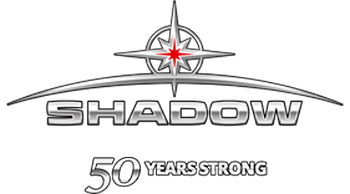Transporting large volumes of dry materials such as food products and construction supplies requires specialized equipment, strict safety measures, and proven expertise. Pneumatic transport logistics meets these demands by using compressed air to move pneumatic dry bulk loads, reducing contamination risk and ensuring operational efficiency.
At Shadow Group, our end-to-end solutions guarantee each load is handled safely and arrives on time—every time. Backed by an experienced team overseeing every step, we uphold quality standards, minimize disruptions, and keep your supply chain moving smoothly.
1. How Pneumatic Transportation Logistics Works
At its core, pneumatic transportation relies on a system that uses air pressure to move dry bulk materials through hoses, pipes, or tanks. By creating a controlled flow of pressurized air:
- Minimal contamination risk – Sealed systems protect loads from outside elements, preserving product integrity.
- Efficient handling – The lack of moving parts (like conveyors or augers) reduces wear and tear, ensuring smoother operations.
- Cost-effective operations – Automated processes and reduced handling time lower labor costs and minimize product loss.
Because materials stay enclosed, companies also benefit from easier clean-up and simpler maintenance, making pneumatic transport logistics a highly sustainable choice for bulk material handling.
5 Common Applications for Pneumatic Dry Bulk Loads
Pneumatic systems can accommodate various industries and materials. Among the most common products moved with pneumatic dry bulk loads are:
1. Food Products (Grains, Flour, Sugar)
Keeping edible goods free from contaminants is crucial. Pneumatic systems maintain cleanliness and prevent cross-contamination, making them ideal for transporting food-grade items.
2. Plastics and Resins
Sensitive materials like plastic pellets or resins must be protected from moisture, dust, and static electricity. Pneumatic transport preserves material quality and ensures a controlled environment.
3. Cement, Sand, and Other Construction Materials
The fine particles in building materials can easily become airborne. Pneumatic tanks capture and contain these substances, preventing spills, dust clouds, and potential environmental hazards.
4. Chemicals and Minerals
Whether inert or hazardous, chemicals and minerals require specialized handling to prevent spills and maintain regulatory compliance. Pneumatic transport ensures a closed system to protect both the product and the transport team.
5. Animal Feed
Similar to food-grade products for human consumption, animal feed must remain uncontaminated and free from moisture. Pneumatic transport is an efficient way to maintain product integrity.
Shadow Group: Risk-Free Pneumatic Transport Logistics
When it comes to moving pneumatic dry bulk loads, partner with a logistics provider that understands the unique demands of the industry. From specialized equipment to comprehensive safety programs, a well-planned pneumatic transport logistics strategy ensures that your products arrive on time, on specification, and without unnecessary risks.
If you are looking to streamline your operations, uphold quality standards, and meet crucial deadlines, turn to the experts at Shadow Group. Our Bulk Pneumatic Services provide safe, efficient, and compliant solutions for all your dry bulk transport needs. Get in touch with us today to discuss how we can elevate your logistics strategy.
Contact us to learn more.
